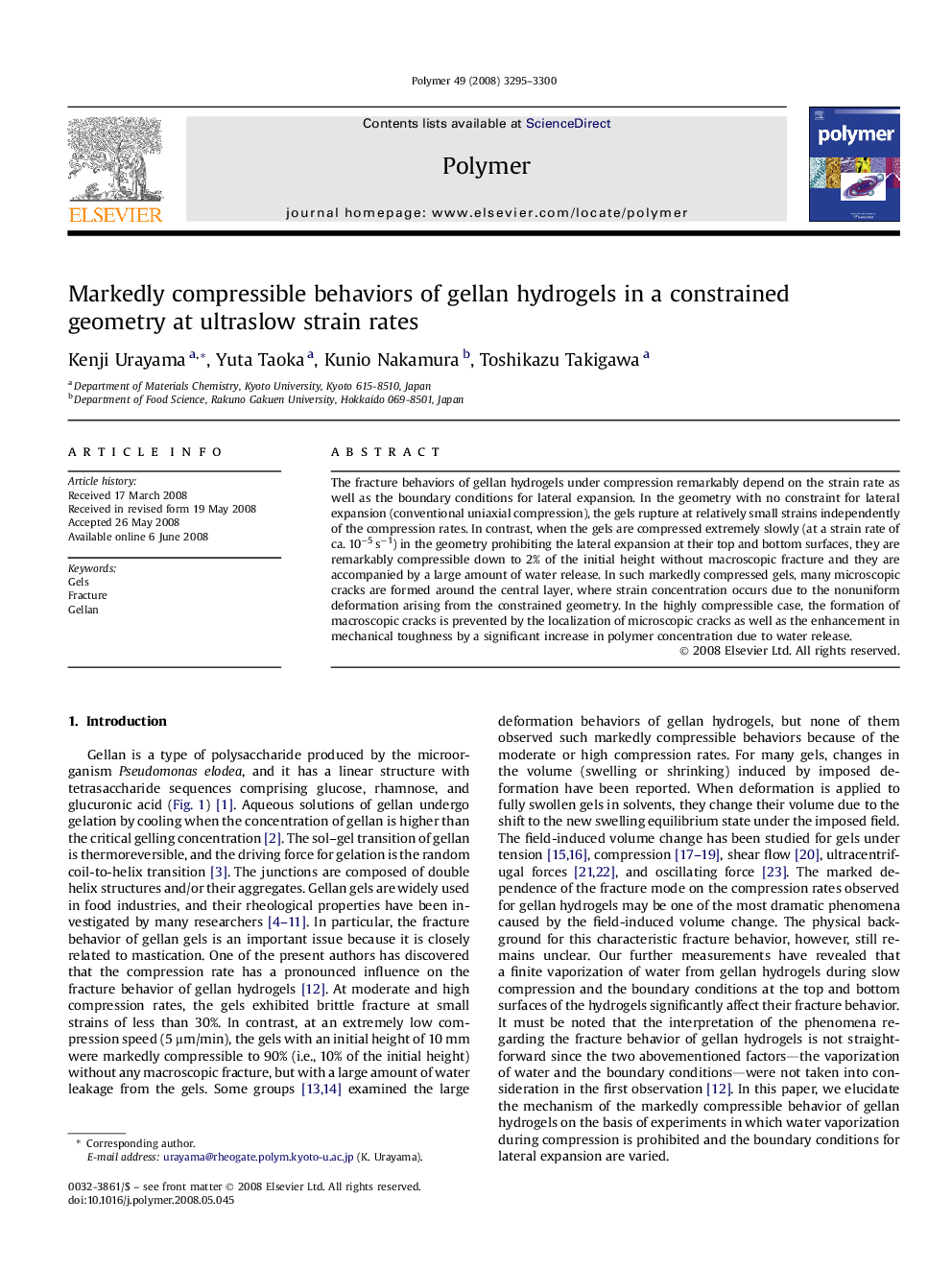| Article ID | Journal | Published Year | Pages | File Type |
|---|---|---|---|---|
| 5187278 | Polymer | 2008 | 6 Pages |
The fracture behaviors of gellan hydrogels under compression remarkably depend on the strain rate as well as the boundary conditions for lateral expansion. In the geometry with no constraint for lateral expansion (conventional uniaxial compression), the gels rupture at relatively small strains independently of the compression rates. In contrast, when the gels are compressed extremely slowly (at a strain rate of ca. 10â5Â sâ1) in the geometry prohibiting the lateral expansion at their top and bottom surfaces, they are remarkably compressible down to 2% of the initial height without macroscopic fracture and they are accompanied by a large amount of water release. In such markedly compressed gels, many microscopic cracks are formed around the central layer, where strain concentration occurs due to the nonuniform deformation arising from the constrained geometry. In the highly compressible case, the formation of macroscopic cracks is prevented by the localization of microscopic cracks as well as the enhancement in mechanical toughness by a significant increase in polymer concentration due to water release.
Graphical abstractDownload full-size image
